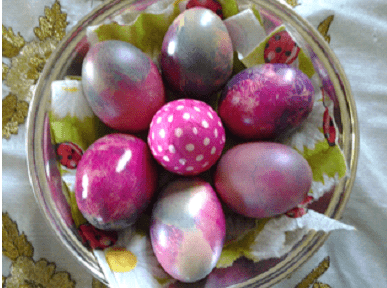According to the Orthodox tradition, at Easter we dye red eggs, because they symbolize the blood of Christ that he gave for the salvation of the world. A centuries-old tradition almost all over the world is the dyeing of eggs and in Greece it takes place on Maundy Thursday and for this reason it is called “red Thursday”. In the past, they used to dye the eggs from midnight, the start of the new day. The pot in which the eggs would be dyed had to be new and their number determined, while after the eggs were dyed the paint was kept for forty days and not spilled, not even outside the house. The predominant color is red, because it is the color of joy, Resurrection, hope, Rebirth, but also prevention. Designs, ways of dyeing and myths about the prevalence of this tradition exist quite a lot (Κόκκινα αυγά την Μεγάλη Πέμπτη (Κοκκινοπέφτη). Ήθη & έθιμα του Πάσχα, 2022).
The colors for the eggs were made from various plants. Brown was made from onion skins, yellow from straw, saffron or almond leaves, light red from poppies, green from parsley and purple from violets. Varji, a type of red wood, was also used to dye the eggs. But red was always the most favorite color for Easter eggs. Regarding the dyeing techniques, there is also variety depending on the place, but also the habits of each housewife. In the old days, they chose leaves from plants and flowers and put one on top of each egg. Then they wrapped an old sock around it, tied it tightly with a thread and dyed the Easter eggs. The first egg they dyed was for the Virgin Mary and they put it in the iconostasis. With this they crucified the children from the evil eye. Today this tradition continues in some households (Κόκκινα αυγά την Μεγάλη Πέμπτη (Κοκκινοπέφτη). Ήθη & έθιμα του Πάσχα, 2022).
Women and girls also decorated the eggs, “writing” or “embroidering” them. On the white eggs they wrote wishes with melted wax, drew scenes from the life of Christ, birds, etc. They then dropped the eggs into the red paint and until the wax melted, the letters and designs remained white. “Embroidered” eggs, as they are called in Macedonia and “partridges”, because they often have birds on them or because they were so beautiful like partridges, often resemble miniatures. One is better than the other. These were sent as gifts by the betrothed to the groom and the christenings to their godfathers and godmothers, to all loved ones. Painted eggs continue to be made with the special tool and wax in Grevena, Macedonia by women who maintain this tradition (Κόκκινα αυγά την Μεγάλη Πέμπτη (Κοκκινοπέφτη). Ήθη & έθιμα του Πάσχα, 2022).
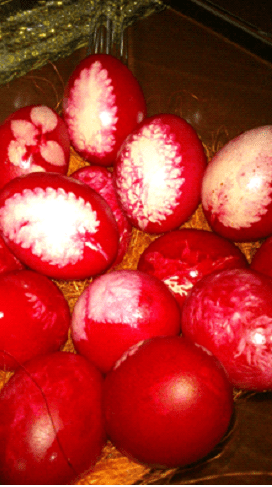
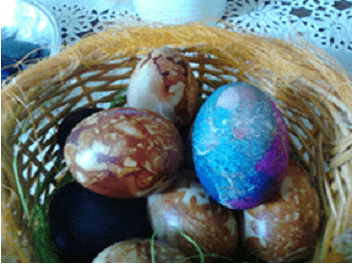
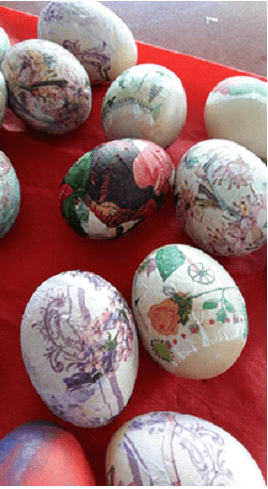
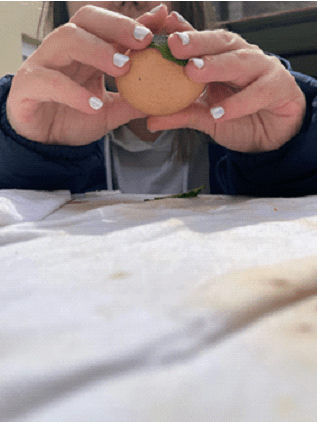
Photos by Despoina and Kiki Chatzisavva
Bibliography
Κόκκινα αυγά την Μεγάλη Πέμπτη (Κοκκινοπέφτη). Ήθη & έθιμα του Πάσχα (2022). Retrieved November 16, 2022 from
https://www.helppost.gr/giortes/pasxa/pasxalina-kokkina-avga-megalis-pemptis/

